Belated April Program Report: "The Geologic Origin of Serpentinites and Unique Associated Minerals," presented by Dr. C. Leigh Broadhurst
Synopsis by Andy Thompson, MSDC Secretary
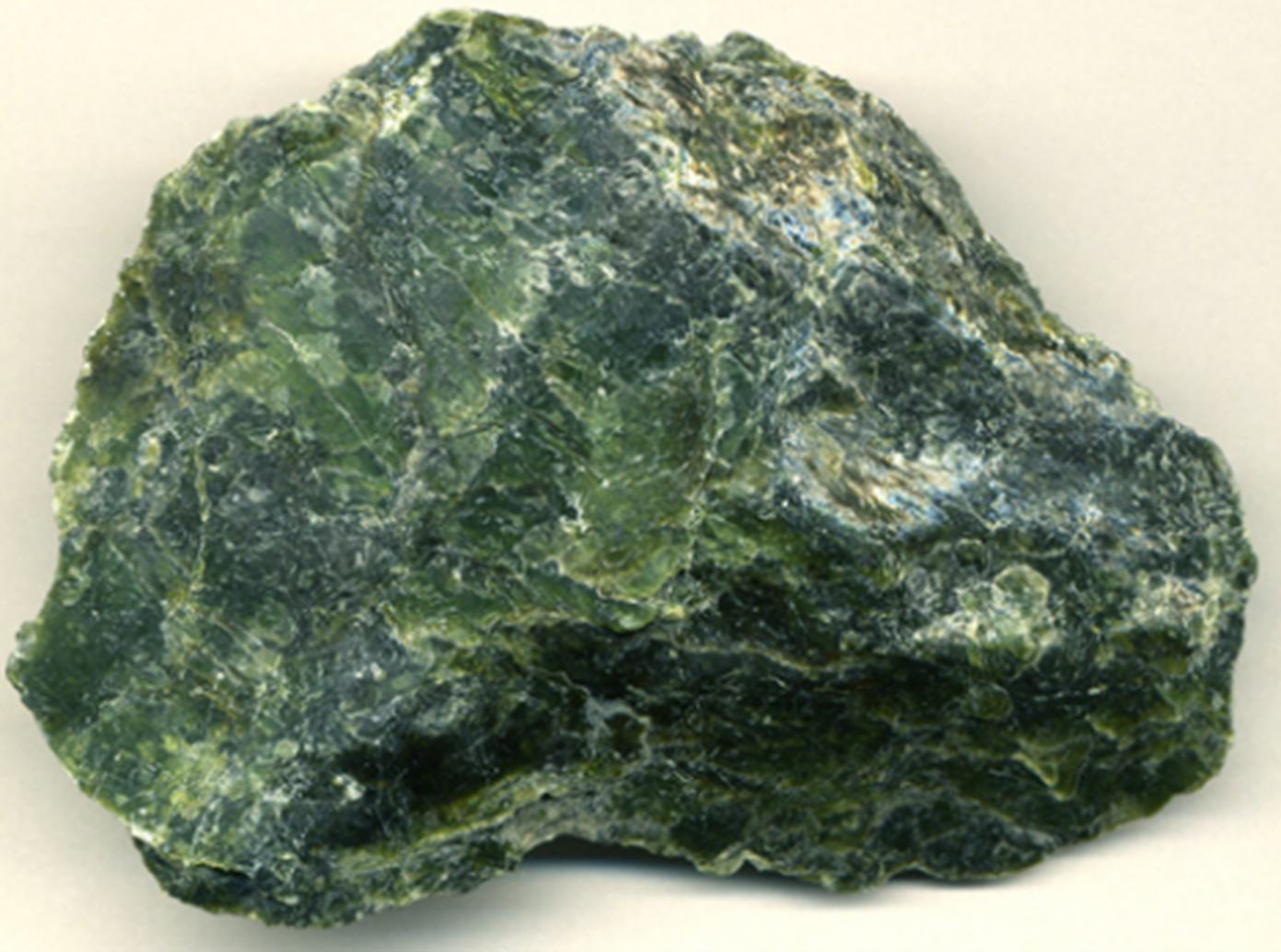
The purpose of this synopsis is to provide readers with highlights from Dr. C. Leigh Broadhurst’s presentation as encouragement for readers t0 visit MSDC’s YouTube channel and view her presentation in its entirety. You can find Leigh’s 34-minute talk at:
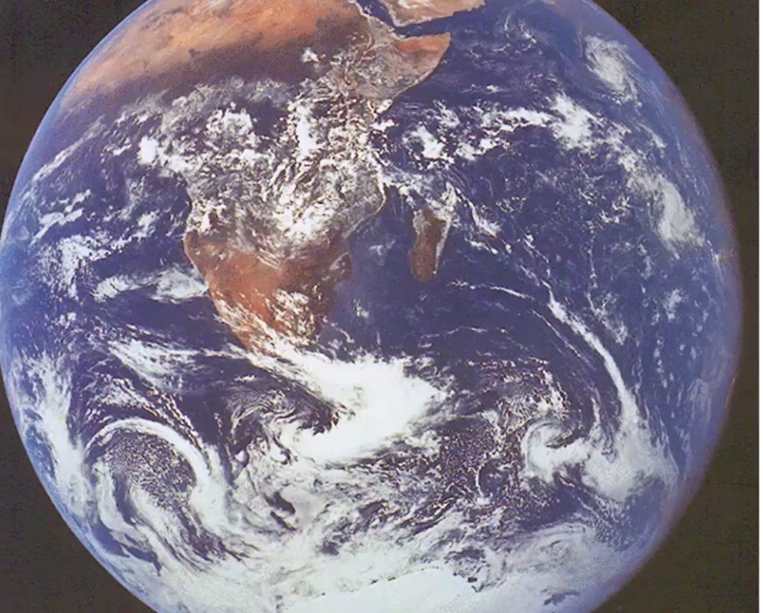
What mineral collector descending into a quarry has not imagined what it would be like to have a professional geologist explaining the tell-tale signs of the processes that brought the quarry and its minerals into their present state? Fortunately, this is what Leigh Broadhurst’s presentation did for her MSDC audience.
Leigh began: “This is a little bit more of a scientific presentation, but trust me, there will be lots of minerals in it as well….” She said she enjoys going into quarries and collecting minerals and brings with her a geologist’s perspective on what she is seeing. This vision is what she wants to share with us, including some of what she has learned from her geological research.
“When I go into a quarry I think about the big picture, the Earth’s plate tectonics. Many of you going into the local quarries of MD, PA, VA, and WV are ending up in serpentine quarries….” Because of the quarries of our local area, we have an abundance of blue stone gravel along our roads, “so it’s a great place for collecting but also to understand how the Earth works. What we are going to do (tonight) is talk about plate tectonics and how it creates these metamorphic rocks.”
Types of Plate Tectonic Activity
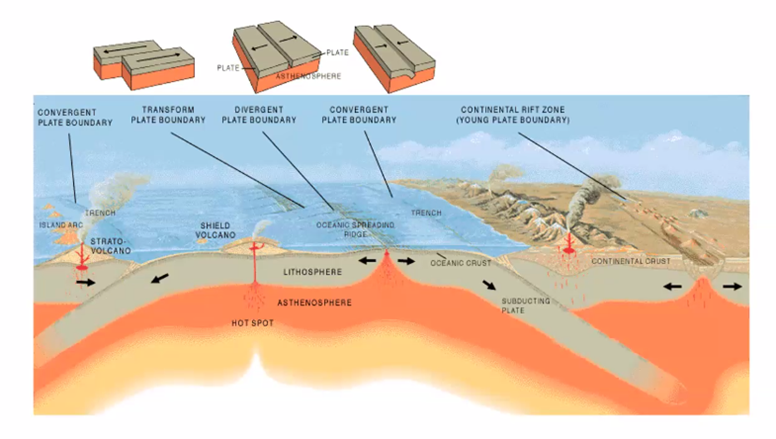
Leigh then briefly referred to the above slide to illustrate three common types of tectonic plate interactions:
· Transform plate boundaries (shown top left, sliding past each other)
· Divergent: mid-ocean ridge spreading plates (the middle image)
· Convergent plates with a subducting plate (on the right, e.g., at the ocean’s coast line or farther inland)
A Type Locality for Rifting Plates
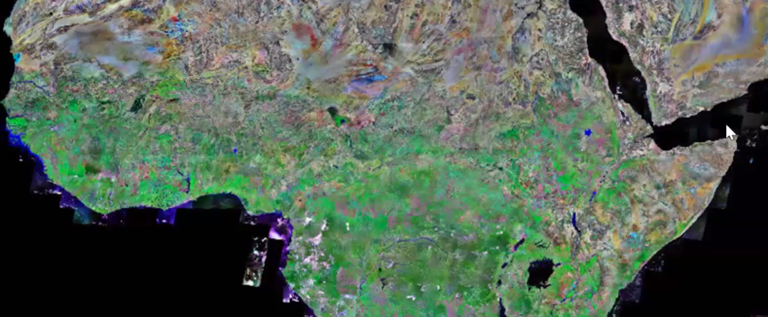
The above image shows the Arabian Peninsula having pulled away from the African plate. These portions of the Earth’s crust, along with the East African Rift valley shown below, make this a “type locality,“ a best example for showing rifting plates. And, she said, given that we are working with mathematics on a sphere (Earth), all our plate junctions are three parts about 120 degrees away, as illustrated below.
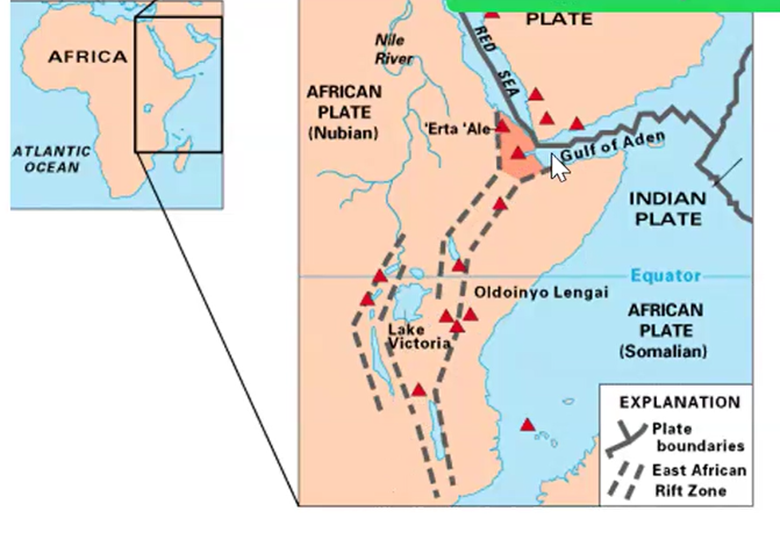
The African plate (left) and the Arabian Peninsula (far right, part of the Arabian Plate), now separated by the Red Sea and the Gulf of Aden, used to be connected. The third part of this triple junction is the East African Rift Valley heading to the south, in the region near of Lake Victoria. The Red Sea, in fact, has oceanic crust below the water that is only about 5 million years old.
The Rift Valley has gigantic lakes, as shown in the lower part of the satellite image shown earlier, “and there are no other lakes like this in a tropical location” (anywhere else in the world). Normally the heat would evaporate such lakes, but the great width and depth of these bodies of water suggests we have here a proto-ocean.
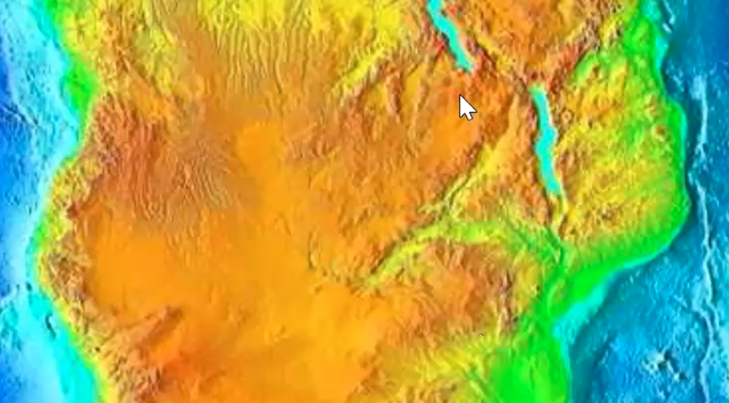
Another Type Locality: Converging Plates
Shown in the image below are three continental crust plates converging, building the Himalaya Mountain range (shown in red to the upper right). The world’s highest mountains are being pushed upwards by the Indian Plate to the south and the Iranian Plate to the west, converging and crashing into the Eurasian plate. Note also how the tip of Oman on the Arabian Plate has pulled away from Iran to form the Straights of Hormuz. Also on the far north (top edge orange crescent) is the Tien Shan, the desolate high arid plateau of southern China.
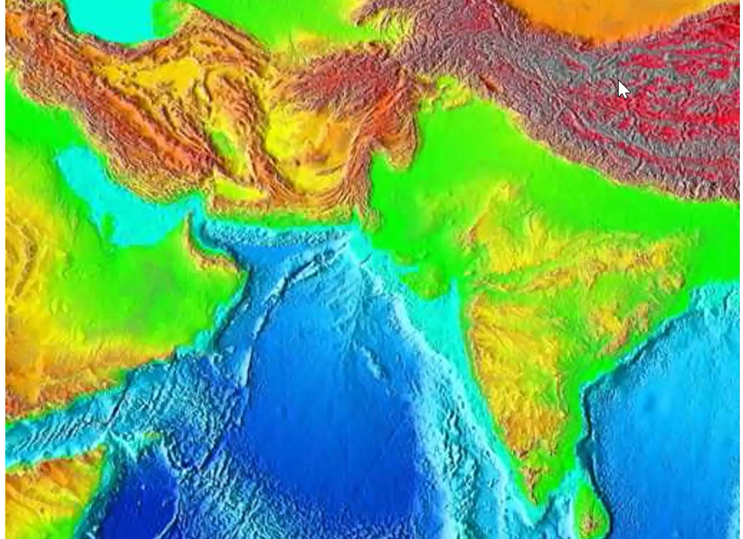
Subducting Plates: The Origin of Serpentinites
Subduction zones occur when oceanic crust meets continental crust. Oceanic crust is dark, heavy basaltic rock and is more dense than continental crust, so it tends to slide underneath, as shown below. Older oceanic crust is denser than younger oceanic crust so it also can slide underneath at times.
Subduction Zone
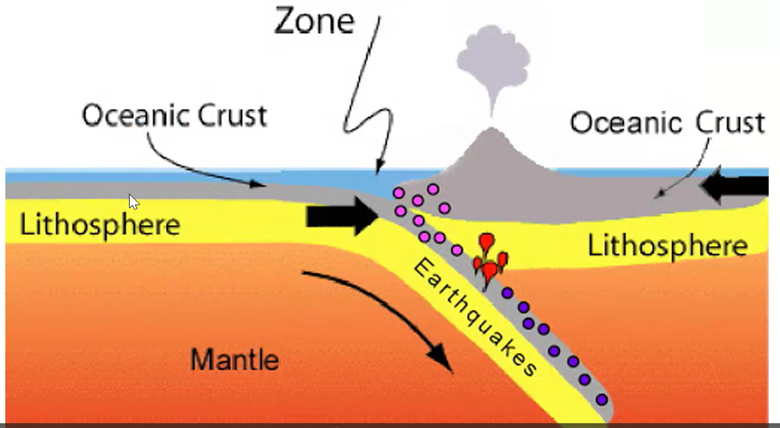
When the oceanic plate sinks about 200 kilometers below the surface, the intense heat and abundant water – which is a fabulous flux that lowers the rock melting precipitously – cause melting of the subducted crust, its overburden of sediments and mantle rock. Magma moves upwards and forms volcanic eruptions. Plate margin eruptions are full of water and are typically very explosive with massive steamy ash clouds. The upward movement of mantle materials is illustrated by the red dots and grey volcano. It is in the subduction zone that some of the mantle’s dark, heavy, ultramafic rock, as well as the basaltic oceanic crust, become metamorphosed to form serpentinites.
The type location for this subducting plate activity, Leigh said, is the entire Pacific coastline of South America. This activity has created the Andes Mountains.
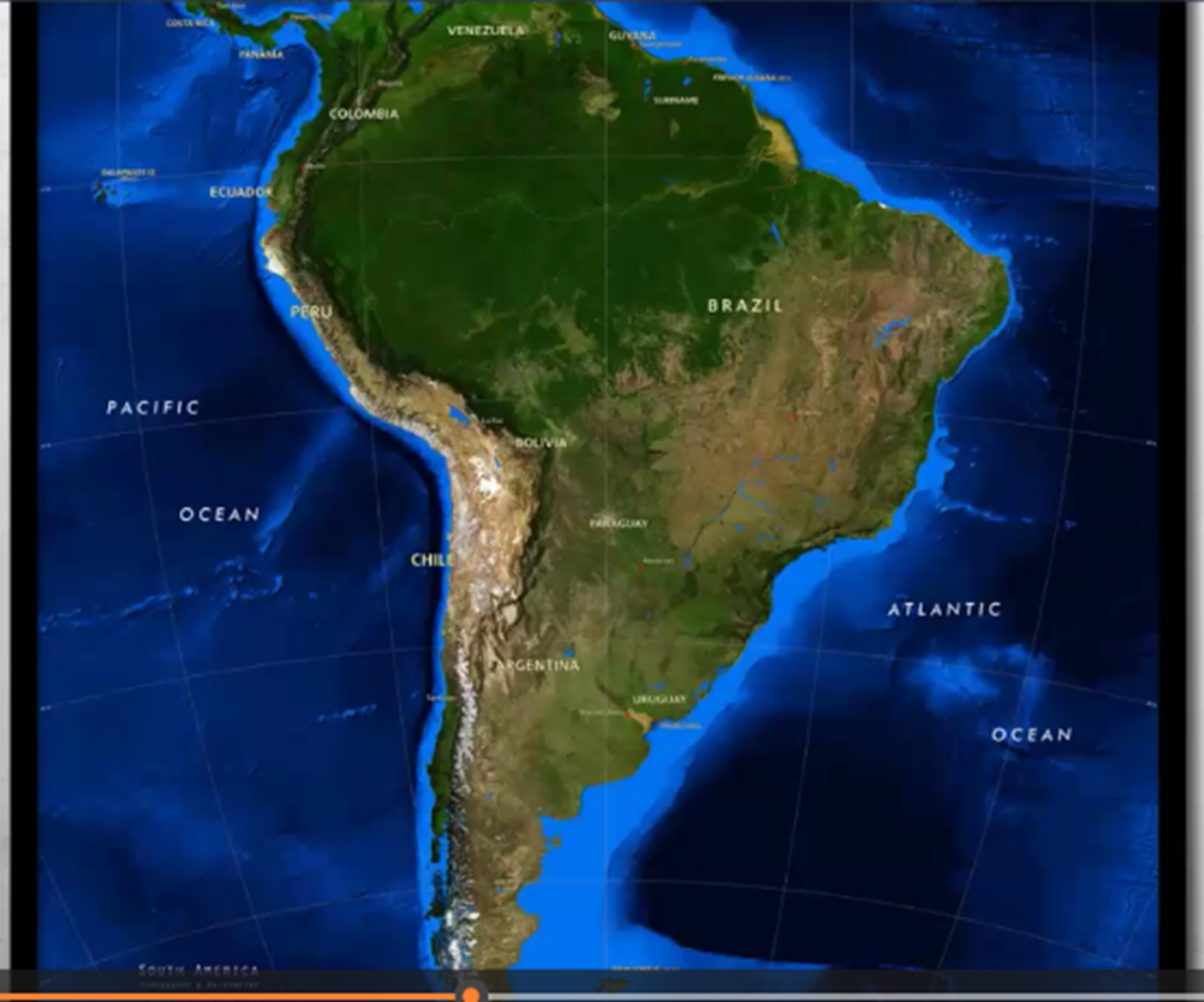
“This is the important thing about serpentinite, it is giving us the chance to see the mantle, which is mainly peridotite, an ultramafic dark rock which looks basaltic." Serpentinite contains a wealth of iron, magnesium, chromium, and nickel, and is poor in silica. Those are its major elements. The melting of the upper mantle, combining with sea water, results in the formation of serpentine. And every once in a while, a piece of serpentinite is “scraped off” and ends up deposited on the surface for us to see. These surface pieces of the metamorphosed mantle are called “ophiolites”.
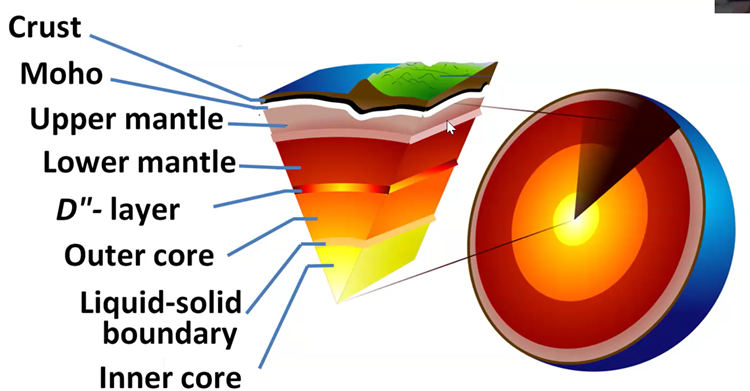
The rich minerals found in serpentinite are a key for understanding Earth’s many geological wonders, which, Leigh explains, include the agricultural wealth of the California central valley and the gigantic rock formations and walls of pillow lava found in Oman, Cuba, and New Caledonia. To gain a fuller explanation of those processes, and what happens when the subduction process “goes wrong” and instead of the crust going down, it “goes up” and deposits ophiolite minerals onto the Earth’s crust, see the video of her talk on MSDC’s YouTube channel here.
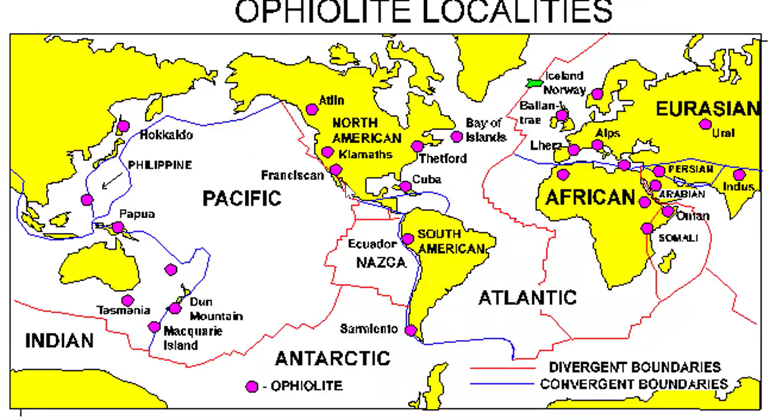
Ophiolites, gigantic rock formations of mantle deposited onto the crust, as shown below, are found throughout the world, as shown above. Excellent examples are found in Cuba and Africa (below).
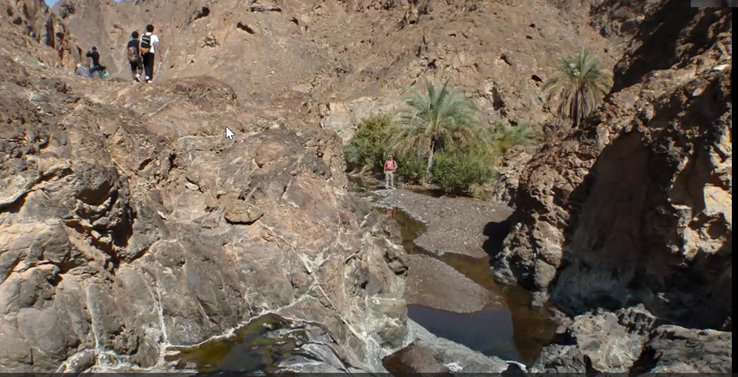
Readers will not want to miss Leigh’s explanation of how the underwater mine sweeping of the ocean floor during WWII is “what changed geology forever.” She described how reading the signatures of successive rows of lava rock with alternating magnetic field alignment proved there was a mid-ocean spreading ridge. This finding validated the tectonic plate theory developed in the 1960s.
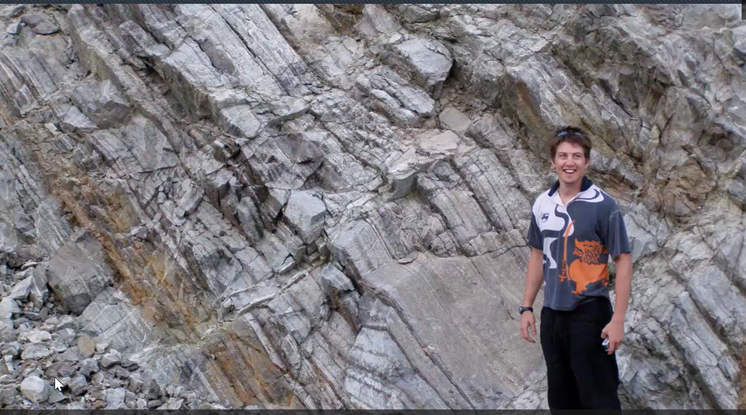
“So, What is Really in These (Mantle) Rocks?”
The major mineral component of the mantle is olivine (Mg, Fe)2SiO4, This ultramafic mantle rock rich in olivine is called peridotite. It also contains clinopyroxene and orthopyroxene. The olivine shown below, Leigh explained, formed nowhere near water so it was not serpentinized. These specimens are transparent, gem-quality, yellowish-green olivine called peridot.
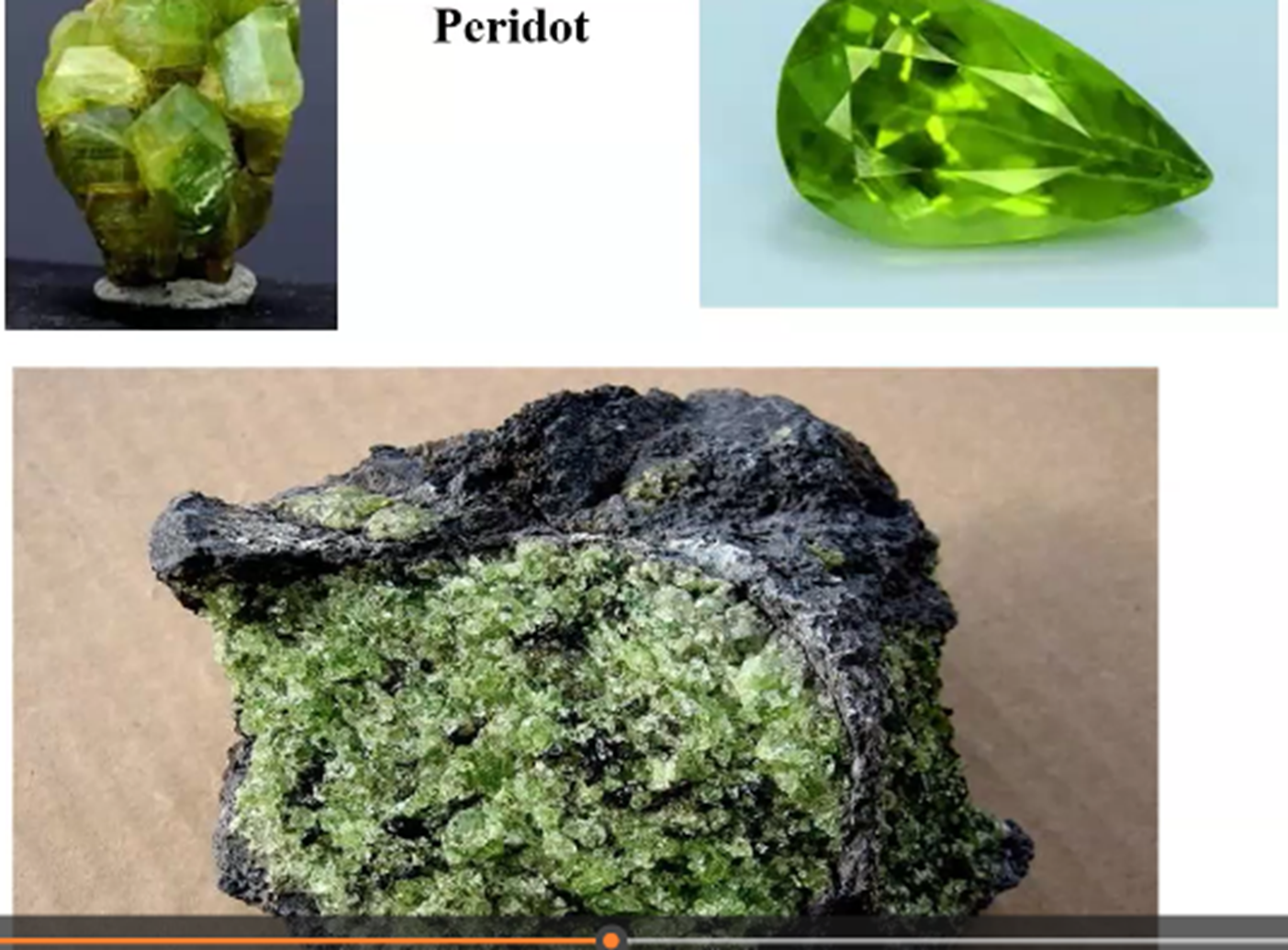
Other minerals, such as those below, have been exposed to water and high pressures.
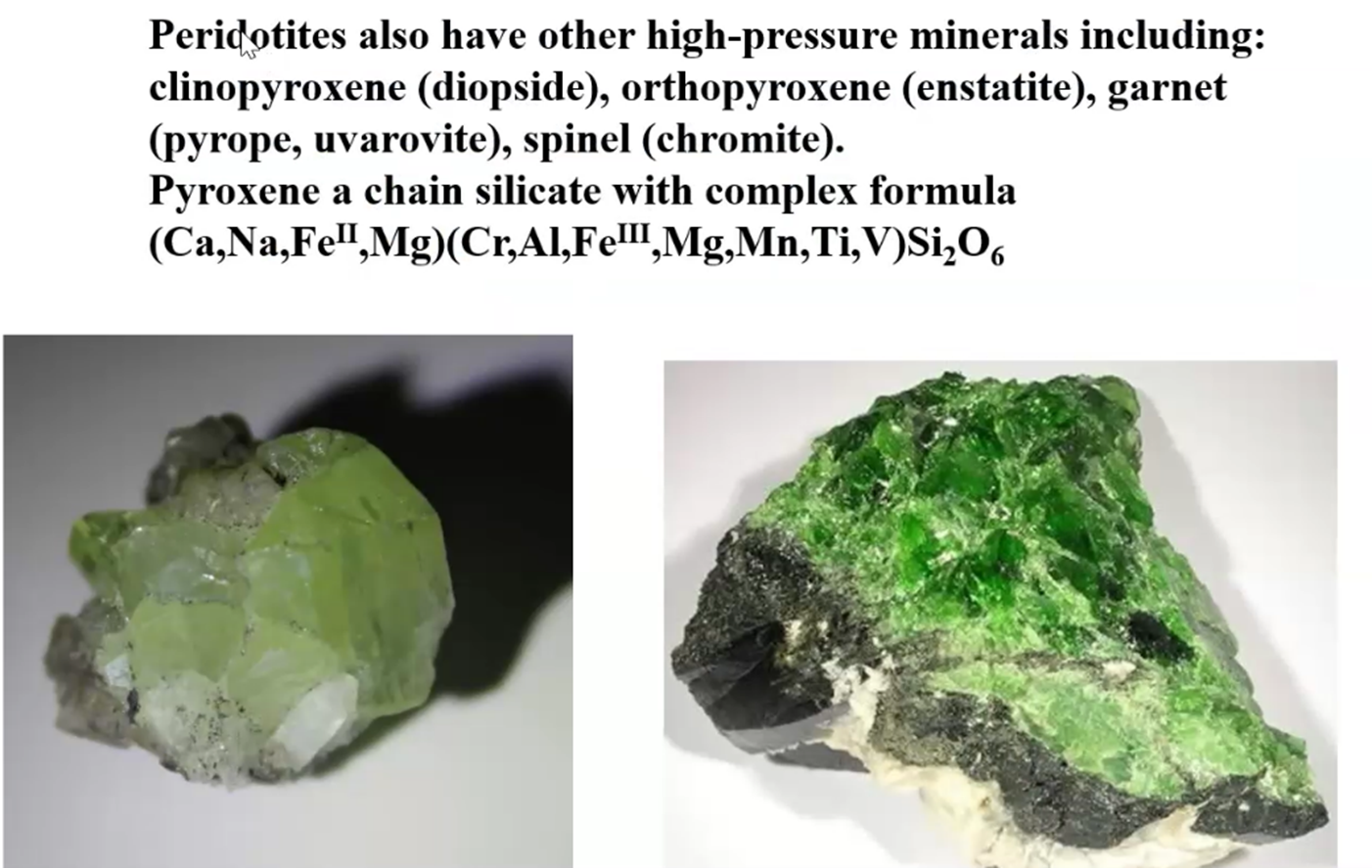
The above specimens are examples of gem-quality diopside.
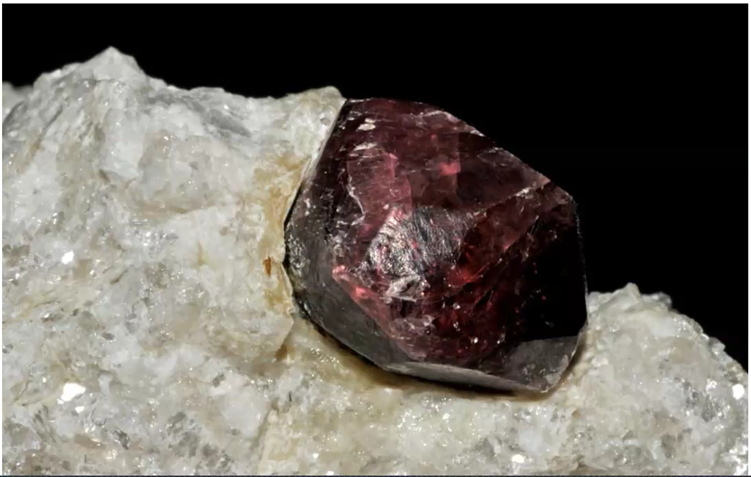
Pictured above is a pyrope garnet: Mg3Al2Si3O13
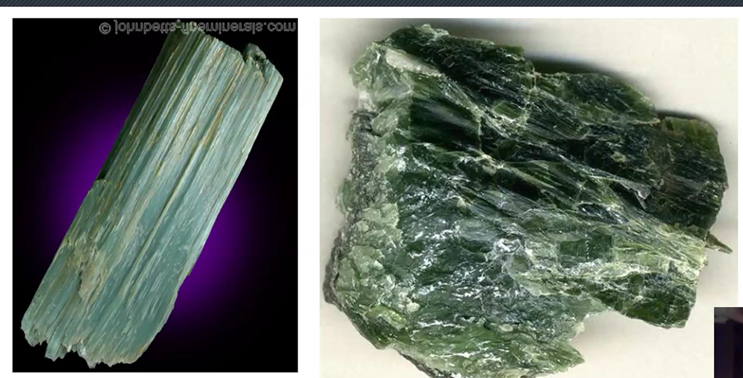
Examples of serpentine in the chrysotile and antigorite forms, common in piedmont quarries, look like the images above. These specimens are the end result of metamorphosed peridotite.
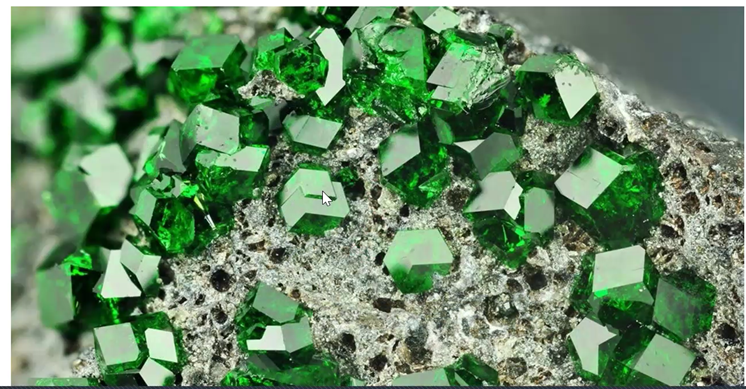
Uvarovite garnet, above, includes chromium, Ca3Cr2Si3O12. “For me, this is one of the most beautiful minerals I know. Its color is spectacular.” These garnets are particular to peridotite rocks.
Readers who watch Leigh’s tape will be rewarded with her further interesting explanations of the origins of the above and additional minerals. She also answers many questions including:
· How do ophiolite minerals end up atop the Alps and Apennine Mountains?
· What happens when this mantle peridotite and associated basalts are metamorphosed in the presence of sea waters?
· Why is serpentinite present in the Appalachians, Vermont and all around us?
· How do geologists understand the high commercial importance and vulnerabilities associated with serpentine asbestos?
· What happens when uvarovite and its chromium gets serpentinized? Hint: see the image below.

· Ever wonder why the world’s largest chromium mine (1828-1850) happened to be in the Baltimore area, and what surface soil looks like when it is laced with chromium?
· Did you know there was once a subduction zone in the Baltimore area, back in the Precambrian era?
Serpentinite rocks are often full of chromite, the world’s only chromium ore. This chromite sample was found west of Baltimore in the Soldiers Delight area. Its type locality is Fulton Township in Lancaster County, PA. The light green is serpentine. The black is magnesiochromite (Mg, Fe)Cr2O4.
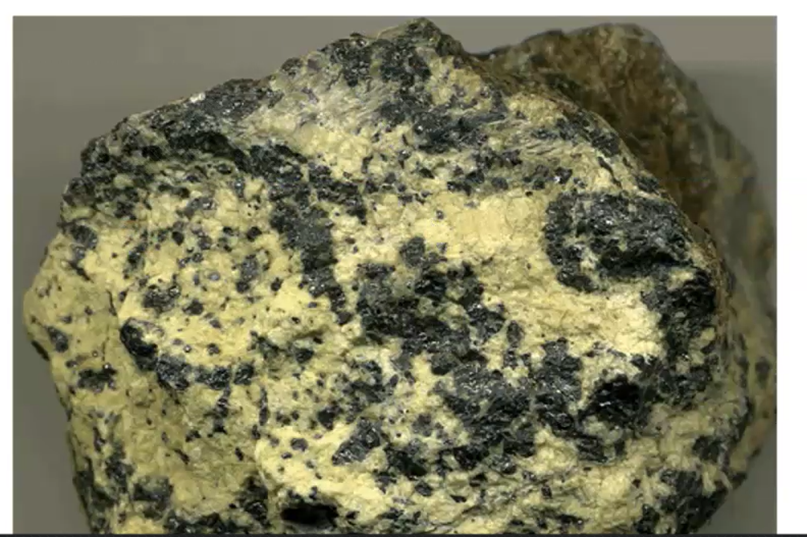
Cinnamon grossular garnet, shown below, is heavily metamorphosed and has been avidly collected from the Hunting Hill Rockville Quarry, Maryland, and Leigh’s explanation of its origin and chemical components is a delight to understand.
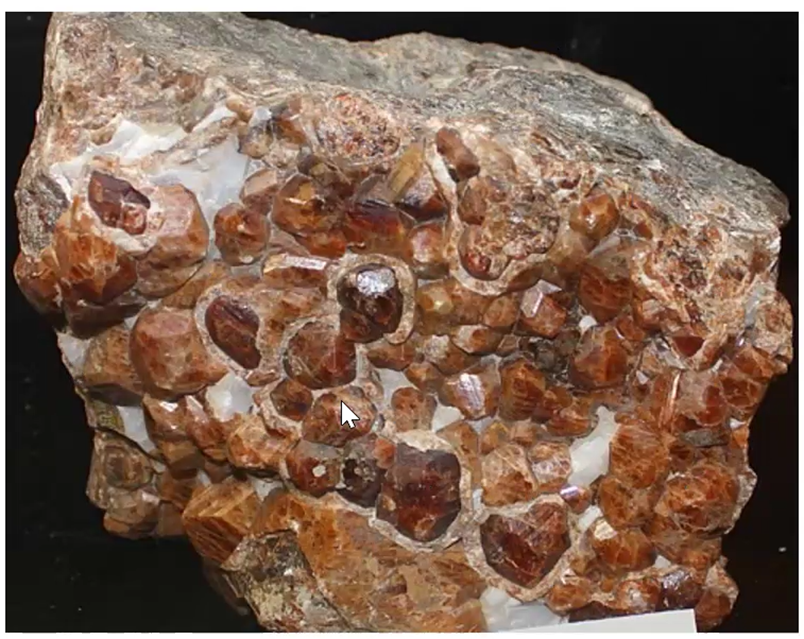
The images below show three additional Rockville Quarry minerals and Leigh’s explanation of their metamorphic history is a “must see” to understand the brown calcium-laden clinozoisite, green iron-laden epidote, and rare blue-green copper-laden mcguinnessite.'
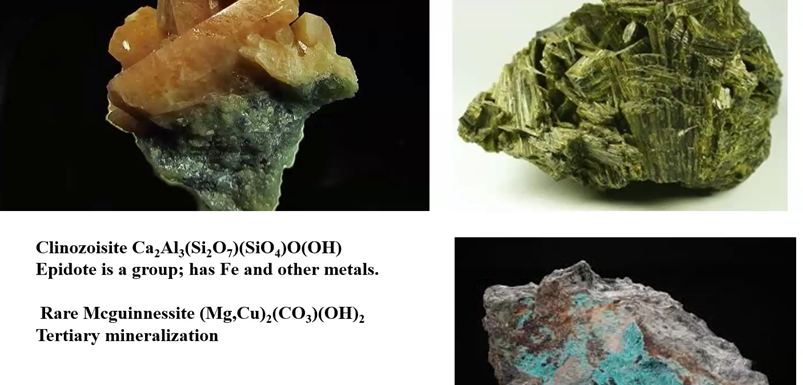
Leigh showed and explained images of additional serpentine minerals not only from the Rockville quarry, but from around the world. She noted, for example, that If you are interested in knowing where to find the oldest rock in Maryland, you would find it in the Archean Greenstone Belt. Leigh showed an image of greenstone and described its location as near I-70 north of Frederick.
Conclusion
Leigh concluded her formal presentation by showing, via her computer camera, additional serpentinized rocks along with explanations of their origins. She then opened the floor to questions from her very interested and appreciative audience. Many of the questions focused on specific minerals, such as antigorite, asbestos, and diopside, or minerals from specific sites, such as millerite from Lancaster, PA.
Mineral collectors can only dream of having this encyclopedic knowledge accompany them as they enter quarries or otherwise encounter serpentinized specimens from near and afar.
President Kenny Reynolds thanked Leigh for her wonderful presentation, which was reinforced by applause from her grateful audience.
Readers: We encourage you to visit MSDC’s YouTube channel and view her presentation in its entirety. You can find Leigh’s 34 -minute talk and 30-minute Q&A discussion at:
